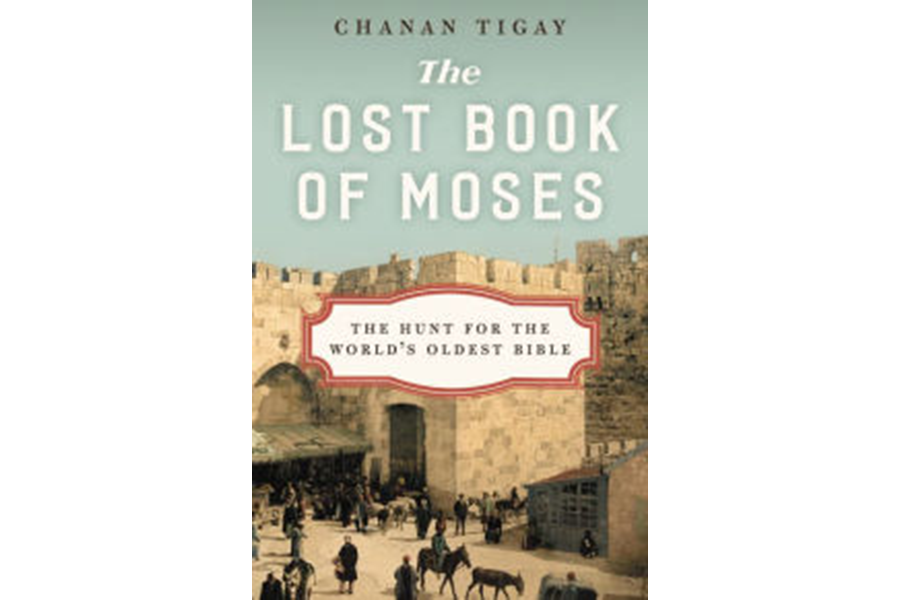'The Lost Book of Moses' is a mystery of biblical proportions
The discovery of the Dead Sea Scrolls in 1947 by Bedouin shepherds catalyzed a new era of religious scholarship. The leather documents, wrapped in linen and black with age, were early, if not first drafts of the Bible.
But nearly 70 years before that remarkable find, a Jerusalem antiquities dealer, the aptly named Moses Wilhelm Shapira, had acquired strikingly similar manuscripts, which, he maintained, comprised an ancient version of Deuteronomy – the fifth book of Moses.
Estimated to be older by a millennium than previously discovered Biblical or Torah texts, Shapira’s trove could be termed something of an abridged word of God. It was considerably shorter than the widely accepted version of Deuteronomy. There were other differences, too. For example, rather than Ten Commandments there were but nine divine admonitions.
The question that was raised about Shapira’s scrolls in 1883 is the same one addressed in The Lost Book Of Moses: The Hunt for the World’s Oldest Bible by Chanan Tigay: To wit, was this purported godsend the real deal or an ambitious and erudite fraud?
It is, in effect, the $250-million question. That was the amount (in today’s value) that Shapira was seeking from the British Museum for his supposedly glorious artifact.
Said salesman was no fly-by-night, street-corner vendor: He had been supplying historical manuscripts to the museum and other distinguished European clients for a decade. A self-taught scholar, Shapira could translate the Hebrew text on the blackened leather strips, and even raised issues with his latest and greatest document that he was offering at such a dear price.
To reach a final verdict on the man and his controversial find, Tigay went in search of the seven lost strips of ancient text, which the British scholars concluded, after careful examination, were forgeries, most artfully done to be sure, but fakes all the same. The scrolls had disappeared into thin air in 1887, three years after Shapira, ruined and despondent, committed suicide.
This is a quest of near Biblical proportions, taking the author, an American journalist and professor who was born in Jerusalem, to England, Holland, Germany, France, Jordan, Israel, and Australia, among other places.
The fact that the Tigay’s’s father is a rabbi and scholar who has written a book on Deuteronomy helps to explain this ambitious – make that compulsive – four-year odyssey. Indeed, the author first heard the story of Moses W. Shapira from his father.
Tigay’s fascination with this obscure mystery is infectious, and his writing is crisp and lively. He is a serious scholarly sleuth who doesn’t take himself too seriously. The chapters go back and forth between the times of Moses, Shapira, and today. It is not so much a “Who done it?” as it is a “Did he do it?”
And if he didn’t do it, if the Brits got it wrong in 1883, then the world of Biblical scholarship would be turned on its ear again. Tigay keeps the reader in suspense until the very end.
Early on Tigay makes a strong case that whether Shapira’s find is divine or duplicitous is beside the point, that either way it is a hell of a tale and well worth the telling. He writes: “If [the scrolls] were real, they would reveal so much about how the Bible developed – how it was written, rewritten, and revised over the course of centuries. And if they were a forgery, whoever created this manuscript was some kind of genius – clever, creative, and profoundly learned. In conjuring a wild version of Deuteronomy, they had somehow managed to predict the Dead Sea Scrolls decades before their discovery. Who had the chops to pull off a fraud this brilliant?”
Indeed, John Le Carré would be hard pressed to devise such a tantalizing mystery or a more complex leading man. Shapira was a Polish Jew who ended up as a German citizen and a Christian living in Jerusalem, where he sold religious memorabilia to pilgrims before branching out into books, ancient (and not so ancient) pottery, and rare manuscripts. During the second half of the 19th century, religious tourism and the fledgling practice of archeology were growth industries in the Holy Land. On his card Shapira listed himself as an “Agent of the British Museum.”
Tigay describes this man who was equally comfortable with British prime ministers and cutthroat Bedouins as “a little bit Indiana Jones and a little Jay Gatsby.” On a four-month excursion to gather antiquities in Yemen, then largely unchartered and dangerous territory, Shapira was briefly kidnapped by a local Sultan and somehow succeeded in getting Jewish communities there to part with some of their holy scrolls. In his account of the expedition, Shapira never explains how he managed this feat, and Tigay raises the possibility that subterfuge, if not outright theft, may have played a part.
Almost as gripping as his subject’s adventures is the author’s historical treasure hunt. Tigay does battle with the fog of time and comes to question many assumptions posing as settled historical fact. Along the way he encounters other “Shapiramaniacs,” including one Yoram Sabo (there could hardly be more than one), a filmmaker who had already been on the case for 30 years.
This may not be the greatest story ever told, but it's a pretty darned good one.






